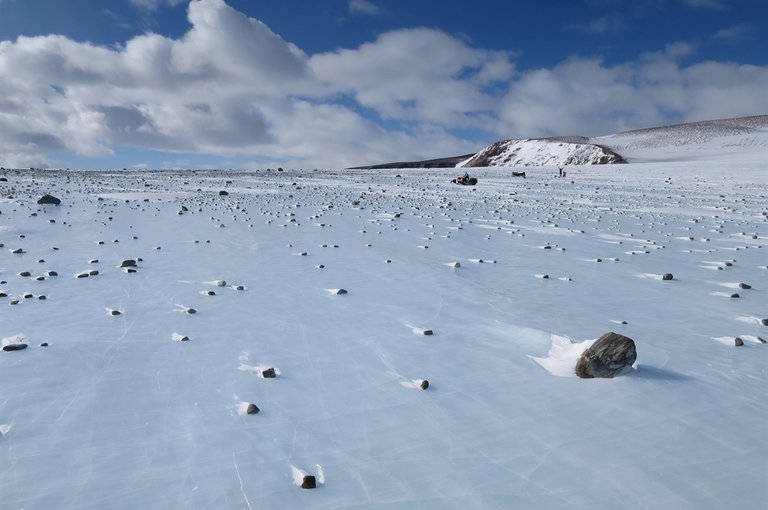
June 23, 2016
Research Highlight
Organics in Primitive Carbonaceous Chondrites

Blue ice field in Antarctica's Miller Range. The Miller range is a prime location for meteorite hunting.Image credit: NASA/Cindy Evans.
A new consortium of studies on primitive carbonaceous chondrites is helping scientists understand the relationship between soluble and insoluble organic phases in meteorite minerals. The work will help delineate between materials that formed within a meteorite and those that formed in nebular or presolar environments. The studies used the carbonaceous chondrite 090657, collected from the Miller Range in Antarctica.
The studies were presented at the 47th Lunar and Planetary Sciences Conference, held March 21-25, 2016, in The Woodlands, TX. The work was supported in part by the Exobiology and Evolutionary Biology element of the NASA Astrobiology Program, the Lunar Planetary Institute Summer Intern Program, and the NASA Early Career program.
Cal et al. (2016) “Organic Analysis in Miller Range 090657 and Buckley Island 10933 CR2 Chondrites: Part 1 In-Situ Observation of Carbonaceous Material,”
Burton et. al. (2016) “Organic Analysis in the Miller Range 090657 CR2 Chondrite: Part 2 Amino Acid Analyses”
Messenger et al. (2016) Organic Analysis in the Miller Range 090657 CR2 Chondrite: Part 3 C and N Isotopic Imaging”